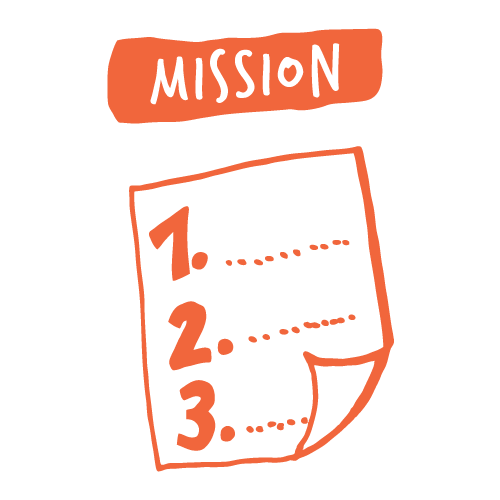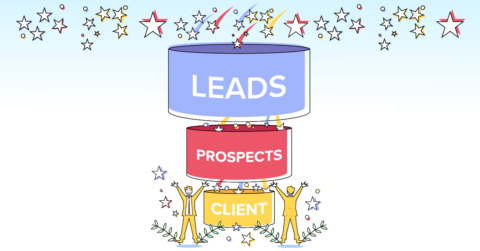
Lúgh Studio’s Ultimate Guide Defining Your Organization’s Mission
11/03/22
digital design
Today we are talking about your organization’s mission, why it’s important to have one, and some of our main tips for creating one.
Download Your PDF Version of this Guide Here
Let’s get started with our latest ultimate guide.
The Benefit Of Having A Clear Organizational Mission
How To Define Your Organization’s Mission
Bonus Questions For Your Donors
…
The Benefit Of Having A Clear Organizational Mission
Is having a clear organizational mission worth your time? It can be a lot of work to nail down the right one — is it worth the time and effort/
The answer is a clear yes. Here are just a few of the reasons why:

1) Having a clear mission leads to a higher impact
People connect to organizations that are very clear on what they do. Think about your own preferences. Do you like organizations (or businesses) that make it a bit confusing to understand what exactly they do? Or do you get attached to organizations that tackle one problem very well?
The fact is, people connect more deeply to what they can actually understand. By having a clear mission, you make it easy for people to grasp the impact you are aiming for. The result? More attention, more interest, and a higher number of donations.
Indeed, an organizational mission can often be compared to a company’s “niche.” You simply don’t want to be an organization whose mission appeals to everybody. This is the quickest way to appeal to nobody, and will most likely result in less donations than you would otherwise receive.
2) It simplifies the way you market your organization
If you have a very clear mission, two things happen: you are clear about what you do, as well as what you don’t do. This makes it easy to determine actions that you should be devoting your time to, as well as the ones you should avoid altogether.
For example, let’s say there is an interesting new style of case study that you see a lot of nonprofits making use of. You hear that it has become an effective part of their content marketing and has been linked to increased donations. Should you give it a shot?
Well — maybe. Is this style of case study actually feasible with the mission that your organization is associated with? While it can be hard to tell if certain types of content can work well for your organization, a clear mission makes the decision process much easier. This makes it more likely that you spend the time on things that actually move the needle — and less time on things that don’t.

3) Makes it easier to work with other organizations
Running a successful nonprofit isn’t a solitary act. In fact, quite often your organization will benefit a ton from working together with another nonprofit. This can involve joint fundraisers, promoting each other’s campaigns, and even simply sharing one another’s content.
The thing is, as valuable as these partnerships can be, they are more likely to happen if your organization has a clear mission. This makes it obvious to another organization if they could benefit from working with you or not. This in turn makes the decision cycle for collaborations much shorter.
How To Define Your Organization’s Mission
Now that we know just a few of the benefits that a clear mission can have for your organization, here is how you can define your own. Reflect on these questions, and gather input from your entire time while thinking of the answers, and you are on the right track.
1) What is the most important thing that you do?
When it comes to an organization’s mission, simplicity is key. It’s easy to overcomplicate things, and an organization can often feel the pressure to expand their mission statement more than necessary. This is risky. Longer missions are harder to remember, less effective at getting people to act, and as a result bring in less donations. Focus on the core of what you do — and then stop there.
Note that the question isn’t “What do you do?” Most organizations do a number of things, and often quite well. However, by forcing yourself to narrow in on the one thing that you do, you focus on the thing that you likely do the best. This is exactly the thing that your mission should state.

2) Who do you help?
What you do isn’t always the same thing as who you help. Perhaps the main thing that you do is directly beneficial to a group of people, but the connection isn’t necessarily clear.
Remember this: people connect to people. They like to see the work of organizations that help people, and remembering to focus on your human impact can have a number of benefits for your organization. Not that this has to be a direct part of your official mission statement — but remembering the people that benefit from your organization is never a bad thing!
3) What problem, issue, or “negative reality” does your organization help solve?
This question forces you to go a little deeper into the positivity that your organization brings into the world. The fact is, pretty much every nonprofit (or business) exists to solve a problem. So what is it that you solve? What “negative reality” does your organization strive to fix? This can be as general or specific as you like.
Remember — you want your mission statement to be relatively simple. To be effective and memorable, the fact is that it needs to be short. That said, even if the answer to this question doesn’t result in you adding anything to your, it will help you understand your mission all the better.
4) How are you different from the rest of the rest of the competition?
Here’s a fact that you simply have to accept: unless you are running a truly revolutionary organization, there’s a good chance there are plenty of other nonprofits )or businesses) doing more or less the same thing as you. Treat this as a good sign. If there is competition, that means there are successful organizations doing what you want to do.
That said, there is most certainly at least one key aspect (likely more) that does make you different from the competition. So…what is it? How are you different from any of the other nonprofits or companies your prospect might come across? What unique angle does your organization have? What does your product or service do differently? Most importantly, how can you effectively communicate this?

5) Is it clear enough?
Do people that come across your organization for the first time know what it is exactly that you do? If it takes any longer than a few seconds, you’re likely not clear enough. If so, it’s back to the drawing board with your mission statement.
This clarity is important to nail down because it can be applied to every touch point you have with your audience. This includes everything from blog posts you write, to the copy on your website, to how you write about your organization on social media.
Bonus Questions For Your Donors
While the previous five questions will help any organization (business included) create a mission statement, the next two are specifically for nonprofits. If you are running this kind of organization, be sure to answer these questions as well:
1) Who is your typical donor?
Let’s be honest: a nonprofit is dependent on donations. Increasing donations is the reason behind much of its marketing efforts, and for good reason: if donations dry up, so too does the organization’s ability to pursue its mission.
That’s why it’s so important to not only think about what it is your organization does…but what kind of person is most likely to donate to you. Be specific here. Much more specific than you are comfortable with. This is essential as a nonprofit because you will get more donations if you are an organization that a small number of people really connect to. Not one that a lot of people vaguely think is interesting.
Go deep on this question. What do you donors look like? How old are they? What do they like, what do they hate, and what kind of lifestyle do they lead? Understanding your donors in detail will help you communicate your organization’s mission in a way that they understand — and appreciate.

2) Why do your donors care about your mission?
For every product or service we spend our money on as consumers, we are trying to solve a problem. It’s the exact same with nonprofit donors. When they choose to donate their money, they are doing so because they believe in the cause that your organization is committed to.
But why? What exactly do they want to donate to your cause? What is it about your mission that makes people reach for their wallet? Is there a specific thing that appeals to people the most? If you can find an answer to this, it will inform multiple areas of your organization: the content you create, the case studies you choose to focus on, and how you choose to promote your various campaigns throughout the year.
The specific why of your donors’ interest in your organization can be hard to pinpoint. Indeed, people are often incapable of telling you themselves why they donate! Still, the answer to this question is essential to at least think about.

Last Tips For Your Mission
Creating a mission for your organization is both the simplest thing you will ever do, and a process that can be deceptively complex. That’s because it can be difficult to know what to focus on, what to emphasize, and what you should completely do away with.
So, in the name of inspiration, here are a few final tips you can keep in mind for better success with the process:
1) Get inspired by other organizations. If you are looking for ideas, one of the best things you can do is to simply look at the missions of other nonprofits. How do they state what it is they do? How can you adapt that to your own mission statement?
2) Create your mission from your team. The bigger your organization is, the more opinions you will have on what it is you actually do. Some of these answers will surprise you. Still, almost all of them will (in some way) be valuable in creating your mission statement.
3) Never stop communicating with your direct beneficiaries. It can be easy to forget about all the good that your organization does when you are in the middle of all your work. That’s why it’s good to talk to the people that most directly benefit from your organization’s efforts. This is fresh inspiration and can even lead to changes to your mission. Which brings me to the next point…
4) Change your mission if you have to. The fact is, organizations hardly ever stay the same. Things change, the founder’s goals evolve, and the things that a nonprofit once focused on morph into something entirely new. This change is ok and a natural part of the process. It’s ok for your organization’s mission to change over time. And if it does? Well, then simply start from the beginning with this guide!
5) Put your mission statement everywhere! You have spent a lot of time and work creating your organization’s mission — now it’s time to use it. For some advice on where to display it, check out this post on where your mission is most useful to display.









